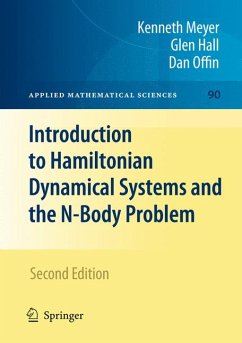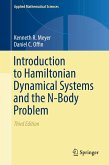Thisneweditionexpandsonsomeoldmaterialandintroducessomenews- jects. The expanded topics include: parametric stability, logarithms of s- plecticmatrices,normalformsforHamiltonianmatrices,spacialDelaunay- ements, pulsating coordinates, Lyapunov-Chetaev stability applications and more. There is a new section on the Maslov index and a new chapter on variational arguments as applied to the celebrated ?gure-eight orbit of the 3-body problem. Still the beginning chapters can serve as a ?rst graduate level course on Hamiltonian dynamical systems, but there is far too much material for a s- gle course. Instructors will have to select chapters to meet their interests and the needs of their class. It will also serve as a reference text and introduction to the literature. The authors wish to thank their wives and families for giving them the time to work on this project. They acknowledge the support of their univer- ties and various funding agencies including the National Science Foundation, the Taft Foundation, the Sloan Foundation, and the Natural Sciences and Engineering Research Council through the Discovery Grants Program. Thissecondeditioninmanuscriptformwasreadbymanyindividualswho mademanyvaluablesuggestionsandcorrections.OurthanksgotoHildeberto Cabral, Scott Dumas, Vadin Fitton, Clarissa Howison, Jesus ¿ Palaci¿ an, Dieter Schmidt, Jaume Soler, Qiudong Wang, and Patricia Yanguas. Nonetheless, it is the readers responsibility to inform us of additional er- ? rors.LookforemailaddressesandanerrataonMATH.UC.EDU/ MEYER/.
Dieser Download kann aus rechtlichen Gründen nur mit Rechnungsadresse in A, B, BG, CY, CZ, D, DK, EW, E, FIN, F, GR, HR, H, IRL, I, LT, L, LR, M, NL, PL, P, R, S, SLO, SK ausgeliefert werden.









